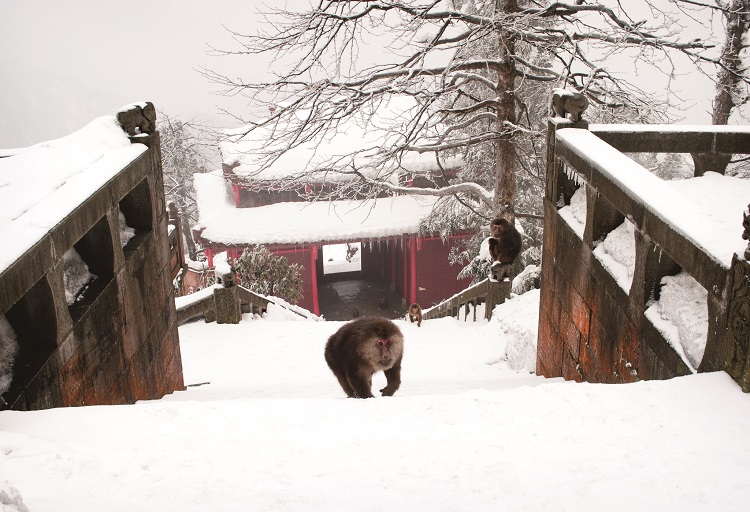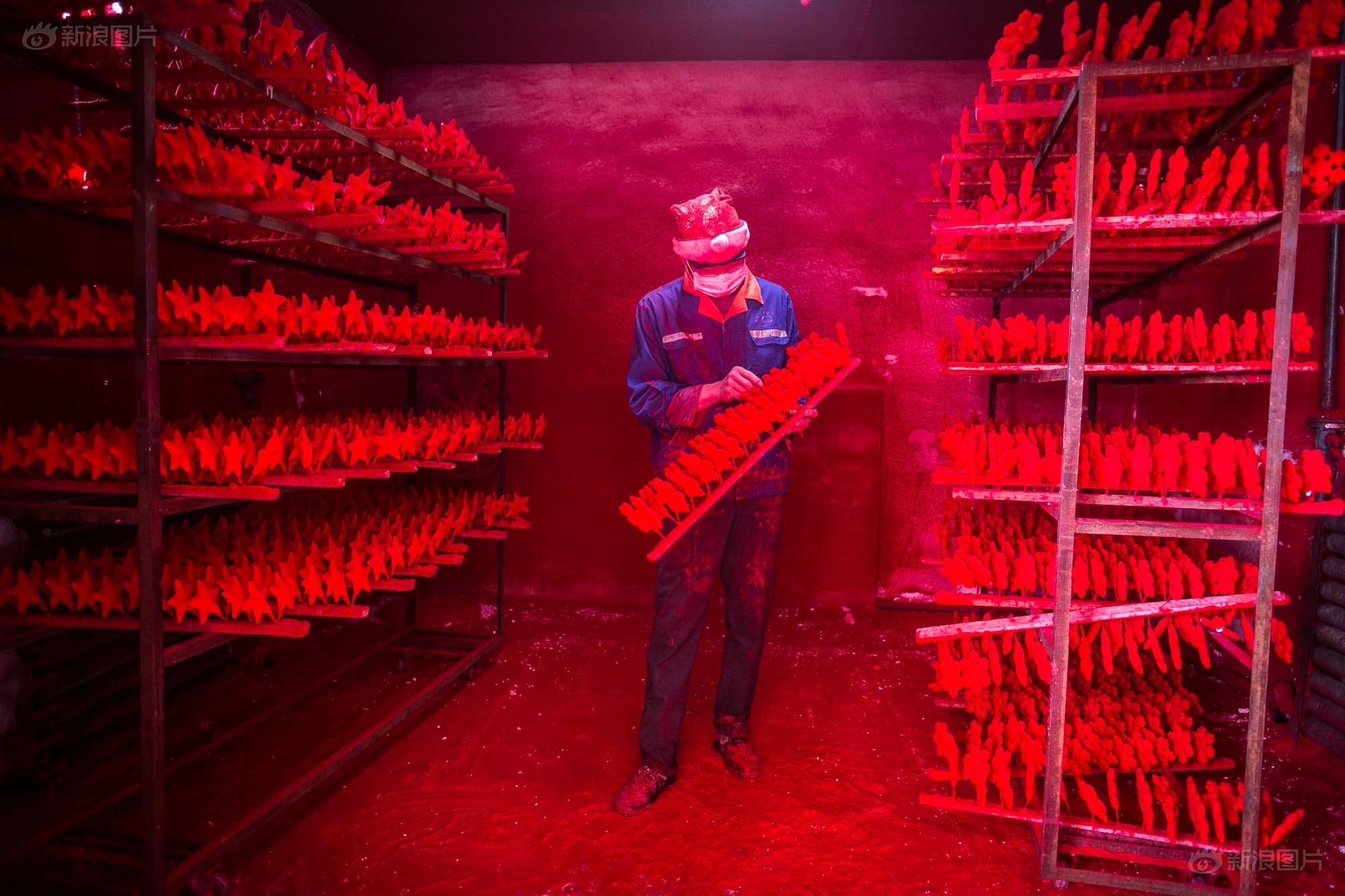Known for its tongue-numbing gastronomy and playful pandas, Sichuan province is a popular stop on the tourist track. With mountains framing each side of the massive Sichuan basin, possibilities abound for getting out of the city and into some alpine air. Perhaps most notably, the Qionglai range, which crisscrosses the western rim of the basin and separates it from the Tibetan plateau, is home to Mount Emei, one of China’s Four Sacred Mountains of Buddhism.
Site of the first Buddhist temple in China, Mount Emei has been an important site of pilgrimage since the arrival of the religion in the first century AD. It housed up to 76 monasteries at its peak, and 16th-century sources reveal that martial arts were also being practiced here, in a similar vein to the more well-known Shaolin. It became a UNESCO World Heritage site in 1996.
Each of the Four Sacred Mountains is dedicated to a bodhisattva, an enlightened being who delayed their Nirvana in order to help others. Mount Emei is dedicated to Samantabhadra, otherwise called the Puxian Pusa, the Lord of Truth. It is referred to as “high and lofty,” not only because of its height (it stretches 200 kilometers from north to south), but as a place of enlightenment.
Only 150 kilometers south of Chengdu, Emei Shan (as it is known in Mandarin) is easily accessible by public transport, which runs from the provincial capital to the base village of Baoguo. Shops cater to trekkers, selling crampons and supplies – stock up early, as we noted the prices go up as you do, peaking with RMB30 chocolate bars near the top.
Baoguo Temple is made up of four buildings, constructed to lean towards the mountain, and is regarded as the gateway. A 10-ton Ming Dynasty bronze bell hangs near the entrance; it is said that the ringing can be heard 10 kilometers away when it is struck.
The paved footpath to the top is 50 kilometers long, winding between and beside the Black Dragon and White Dragon rivers, and takes several days to walk. Dotted along the route are monasteries designed to make use of the scenery; the normally fixed design of the buildings was made flexible to adapt to the surroundings, incorporating stilts and terraces.
We bus up to Wannian station, near the halfway point. It’s a slow upwards crawl. After 30 minutes, white patches begin to appear. Snow typically covers at least the top 18 kilometers of the peak, and by the 45-minute mark the bus is sledding through a winter wonderland. Everywhere is blanketed in puffy powder; icicles cling to branches and sun dazzles off the pristine surfaces.
 A cable car shuttles between Wannian and the nearby monastery, where visitors are greeted by sculpted snow Buddhas and the imposing statue of Puxian Pusa riding an elephant. It is Emei Shan’s oldest surviving temple and can be busy with pilgrims and tourists due to accessibility. From here, we climb the remaining 14 kilometers with crampons on. Although the path offers a clear trail to follow, stairs are steep and spots are slippery. Despite the hawkers selling water and the sedan chairs for the weary, it is still a mountain, and at 10,000 feet is on the lower limits of altitude sickness.
A cable car shuttles between Wannian and the nearby monastery, where visitors are greeted by sculpted snow Buddhas and the imposing statue of Puxian Pusa riding an elephant. It is Emei Shan’s oldest surviving temple and can be busy with pilgrims and tourists due to accessibility. From here, we climb the remaining 14 kilometers with crampons on. Although the path offers a clear trail to follow, stairs are steep and spots are slippery. Despite the hawkers selling water and the sedan chairs for the weary, it is still a mountain, and at 10,000 feet is on the lower limits of altitude sickness.
Not long after starting the climb we encounter a group of the most infamous wildlife inhabitants: the Tibetan macaques. Beginning in Baoguo, bamboo ‘monkey sticks’ are sold everywhere to protect against the sometimes aggressive simians. We pooh-pooh this idea until one charges us from behind and leaps onto our arm, tearing a hole into the sleeve. Hip high with sharp teeth and claws, a macaque could certainly do some damage. This is aggravated by the confusing messages sent out by the park employees, who alternate between feeding them all day so they’ll stick around for tourists and whacking them if they get too close. We buy one of the sticks after the incident, which turns out to be very useful in staying upright.
The last stage of the climb begins after reaching Leidong Ping, where a lurching cable car ferries visitors to near the Golden Summit. The path weaves through forest trails, oddly still and muffled by snow, and opens up to views of the final destination. Here, natural beauty merges with spiritual extravagance: a temple of gold glints in the sun. Adorning the peak is the highest golden statue in the world, again of Emei's patron bodhisattva, Puxian.
Standing below the statue in the evening reveals the mountain’s phenomenon, called the Sea of Clouds. For a few minutes the clouds above merge with the mist below, as pilgrims watch the barrier blur between sky and snow, heaven and earth.
Trekking time
Two days: The whole mountain can be done in two with some strenuous hiking and an overnight stay in a monastery.
One day: Bus to Wannian Monastery and climb to Leidong Ping. Take the cable car then hike two hours to the Golden Summit.
Half day: Bus straight to Leidong Ping, then take the cable car and hike two hours to the Golden Summit.
Transportation
Frequent buses depart from Chengdu bus station to Leshan, as do trains to Emei from Chengdu train terminal. Transfer to a bus or taxi to Baoguo. This will take approximately three hours.
On Mount Emei, local buses go up and down from Baoguo to Leidong Ping every 30 minutes from 7am to 7pm, making all major stops in between.
Accommodation
Baoguo: Emeishan Hostel C offers clean, spacious rooms with heat and a private bathroom with hot water for RMB110/night. Staff are English-speaking and helpful. Call 0833-559 0190 for more details. There are also more upscale hotels in Baoguo catering to Chinese tour groups.
If staying the night on Mount Emei, monasteries are the only options. Interesting and low cost, be prepared for bare-bones rooms that may be a tad cold.
Weather
Mount Emei experiences long, cold winters and heavy rainfall in the summer. Winter clothes and proper footwear are needed all year round.



















0 User Comments